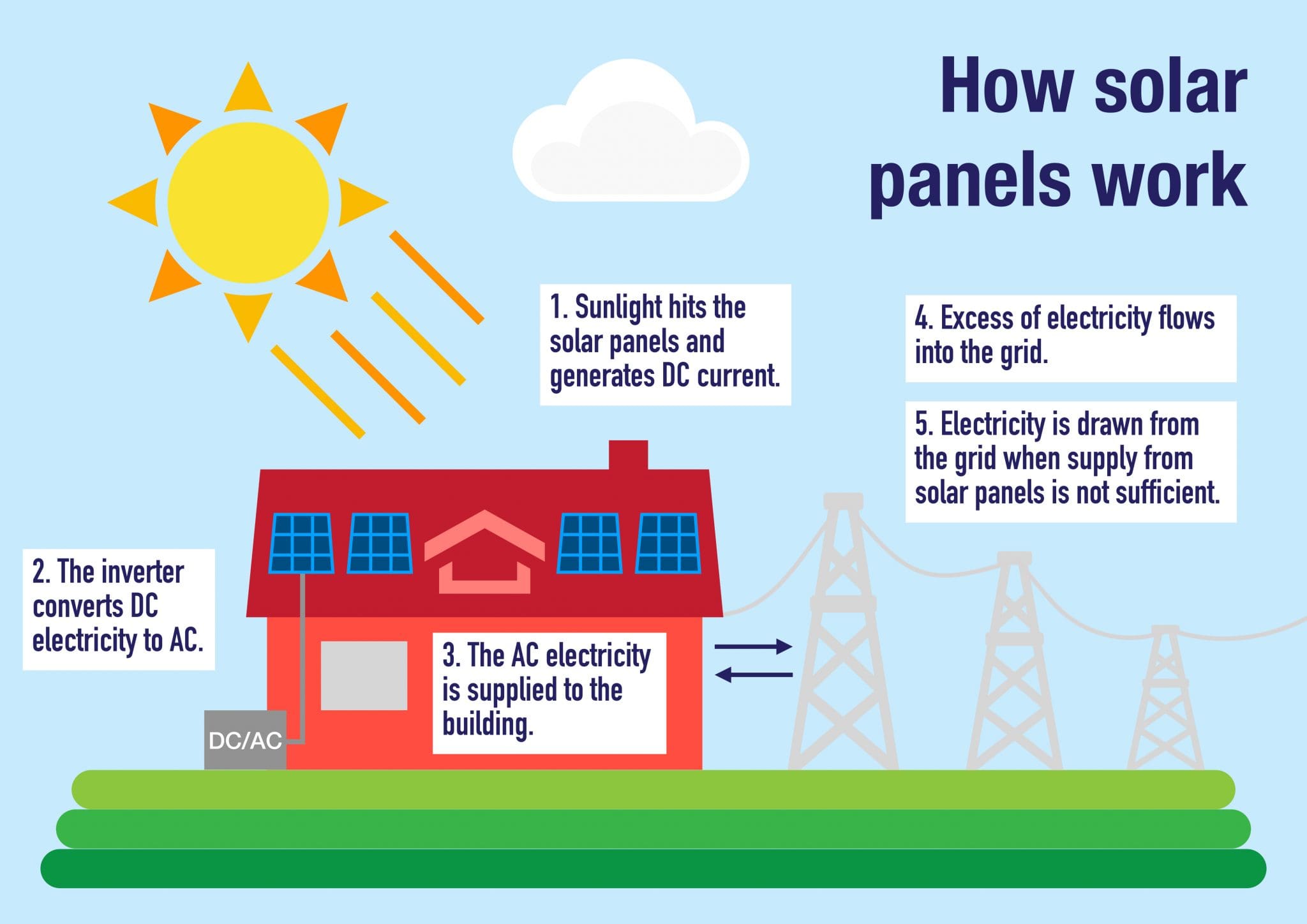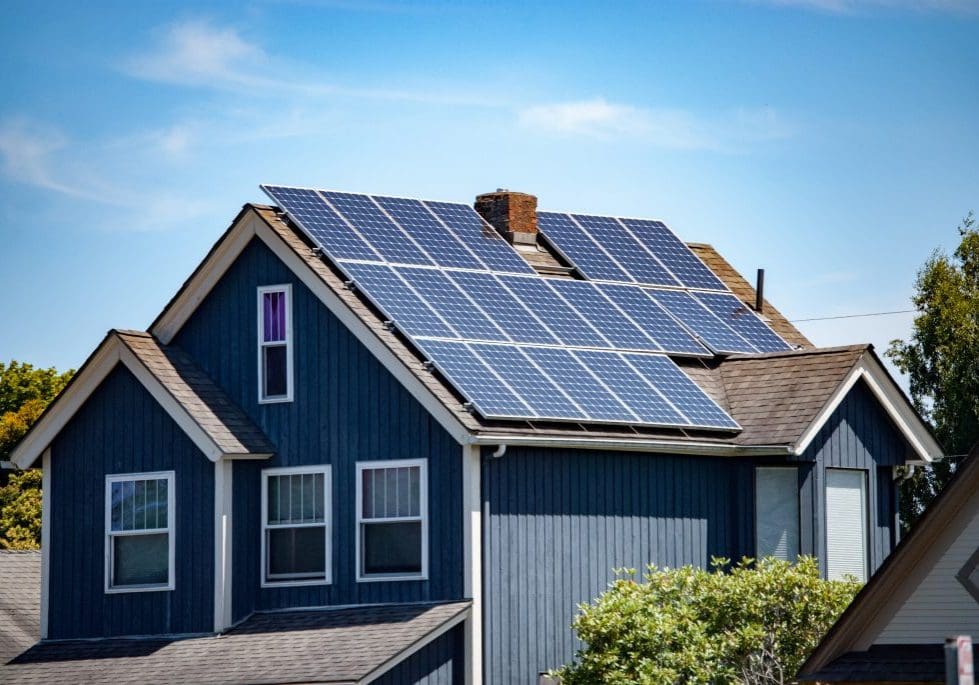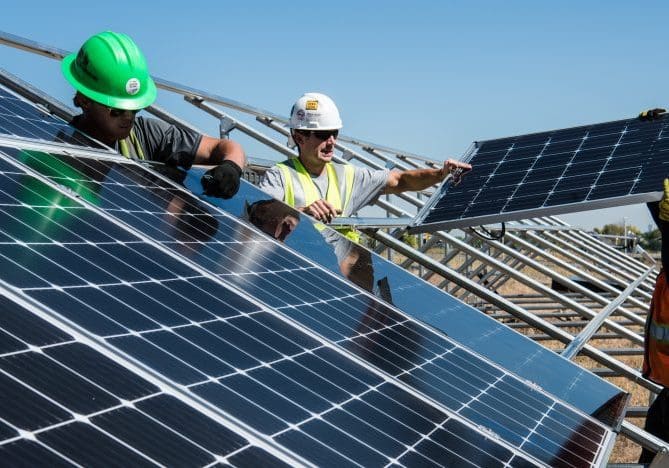Solar Panels
Solar panels are made of photovoltaic cells, meaning they can convert sunlight into electricity. When sunlight hits the surface of the panel the cells collect photons from the sun's rays. The photons are pushed through to release electrons. The electrons are directed into an electrical current known as a direct current (DC). Combining many solar photovoltaic panels creates an array. The larger the array, the more electricity produced.
Inverter
Next, the DC electrical current is directed to the inverter. The inverter takes the DC current and converts it into AC (alternating currents), which most homes and buildings are powered by. String inverters can be used to string together multiple panels together to one inverter. String inverters are typically used when there is a battery backup. Microinverters can be placed on the back of each panel or up to four panels at a time and convert the DC to AC power on the roof.
Electrical Box
The AC electricity is sent to the breaker panel. From there the breaker panel distributes energy throughout your home to power your everyday appliances.
Back up batteries
The solar array is connected to a battery. Allowing you to charge them to ensure you have backup power during power outages. We use a Fortress 48 volt D/C battery.
Net Metering
During periods of time when your solar system is producing more energy than you need, excess energy is sent back to the utility grid. An advanced meter will record the transfer and run the meter backwards proving even further savings. Net metering is only for solar systems connected to the utility grid.

Roof Mounted
There are multiple factors to consider when thinking about roof-mounted systems.
ROOF FEATURES
Does your roof have any obstructions such as skylights, wires, vents, etc?
ROOF ORIENTATION
South-facing roofs have the highest efficiency output. Roof mounts can accommodate west or east roofs as well.
ROOF SIZE
Smaller roofs have less space to place solar panels. Obtaining measurements of your roof will help determine how many modules can be installed on your roof.
ROOF AGE/ LIFESPAN
Roof-mounted systems might not be the best option if your roof will need to be replaced in the near future. You don't want to have to remove solar systems shortly after installing them.


Ground Mount
Ground mounts are easier to install and maintain. They also take less time to install than roof mounts. Ground mounts do not depend on the size and durability of your roof, however, they do take up yard space. Additionally, they are not contingent on your roof's angle and orientation.
